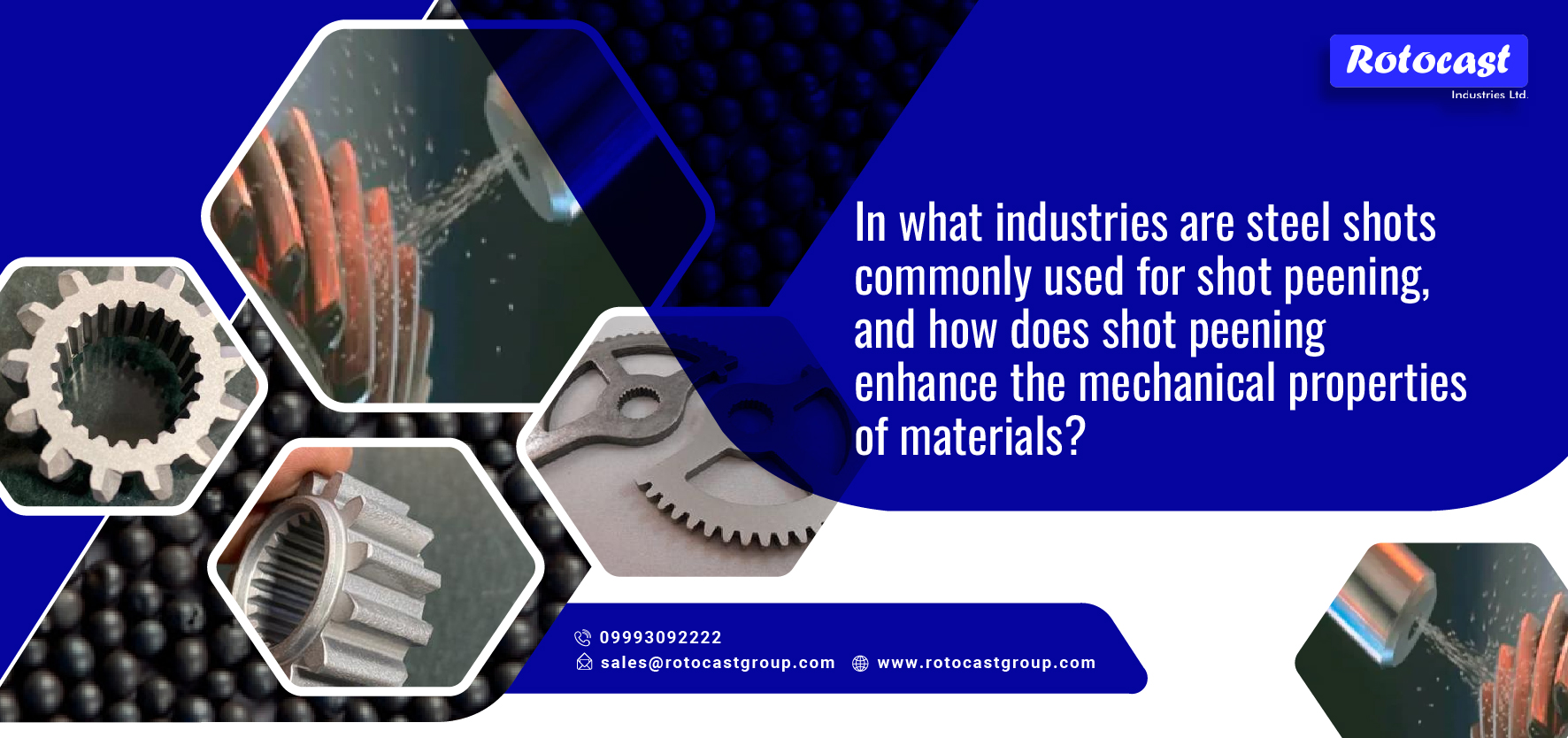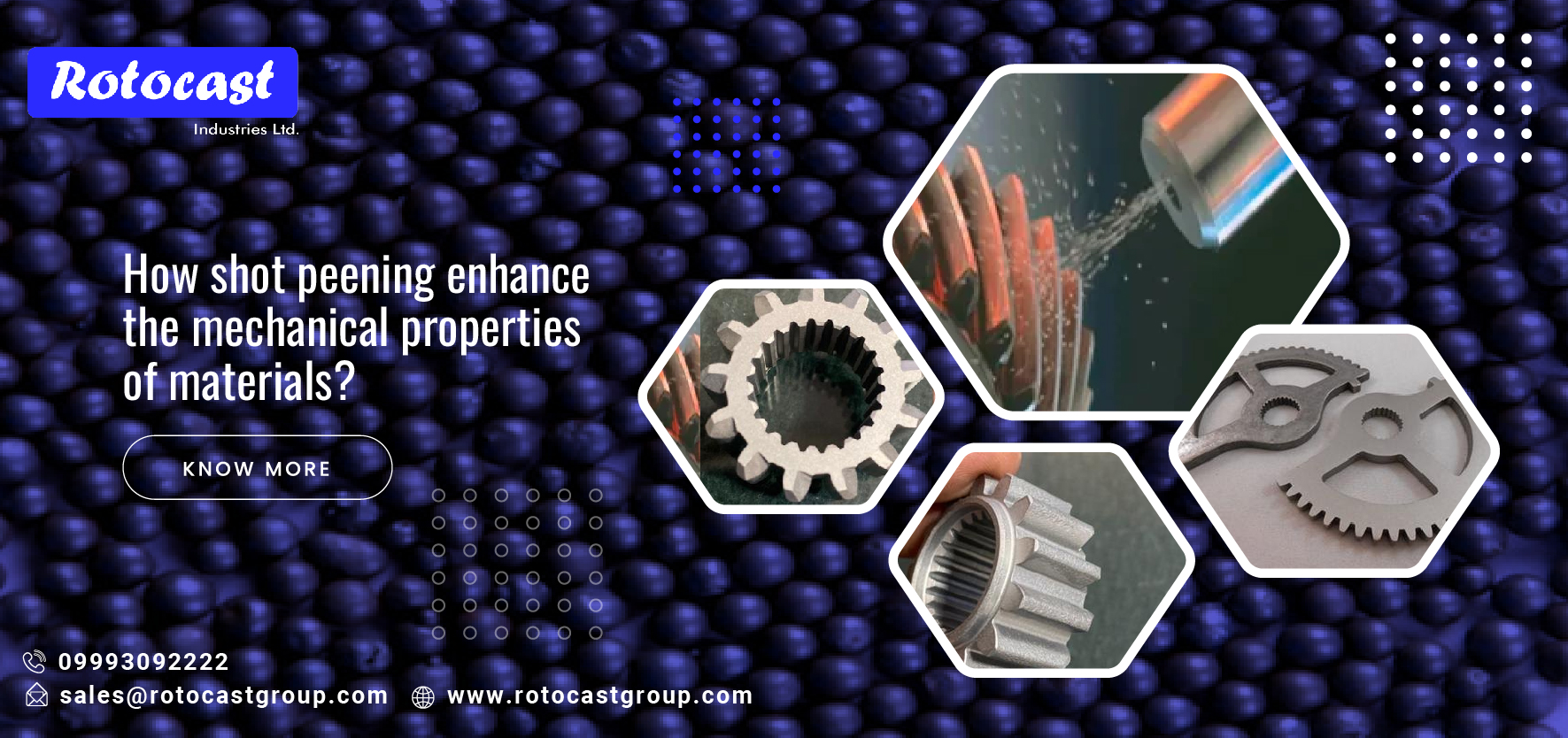
Steel shots are commonly used for shot peening in various industries where improving the mechanical properties of materials, such as metals, is essential. Shot peening is a cold working process that involves bombarding a material’s surface with small, spherical or irregularly shaped pellets, such as steel shots. This process induces compressive residual stresses and enhances the material’s mechanical properties. Here are some industries where steel shots are commonly used for shot peening:
- Aerospace Industry:
- Shot peening is widely employed in the aerospace industry to strengthen critical components like aircraft engine turbine blades, landing gear, and structural elements. It helps improve fatigue life and resistance to stress corrosion cracking.
- Automotive Industry:
- In the automotive sector, shot peening is used to enhance the durability and fatigue resistance of various components, including gears, springs, connecting rods, and suspension parts. It also aids in reducing the risk of component failure.

- In the automotive sector, shot peening is used to enhance the durability and fatigue resistance of various components, including gears, springs, connecting rods, and suspension parts. It also aids in reducing the risk of component failure.
- Manufacturing and Machinery:
- Shot peening is utilized in manufacturing and machinery industries to improve the surface properties of components like crankshafts, camshafts, bearings, and shafts. It increases wear resistance and prolongs component life.
- Oil and Gas Industry:
- Critical components in the oil and gas sector, such as pipelines, valves, and drilling equipment, undergo shot peening to enhance their resistance to stress corrosion, fatigue, and wear.
- Medical Device Manufacturing:
- Certain medical devices, such as orthopedic implants and surgical instruments, benefit from shot peening to improve their surface finish, wear resistance, and biocompatibility.
- Power Generation:
- Power generation equipment, including turbines, generator shafts, and boiler components, may undergo shot peening to enhance their resistance to thermal and mechanical stresses.
The process of shot peening enhances the mechanical properties of materials in the following ways:
- Surface Compression: Steel shots striking the material’s surface create small indentations and deformations. These deformations induce compressive residual stresses in the surface layer. These compressive stresses help counteract tensile stresses that can lead to crack initiation and propagation.
- Fatigue Resistance: By introducing compressive stresses, shot peening improves the material’s fatigue resistance. It inhibits the growth of fatigue cracks, thereby extending the component’s fatigue life.
- Wear Resistance: Shot peening can harden the surface of the material, making it more resistant to wear and abrasion. This is particularly important in components subjected to sliding or abrasive contact.
- Improved Microstructure: Shot peening can refine the microstructure of the material’s surface, leading to improved mechanical properties, such as increased hardness and strength.
- Reduced Sensitivity to Corrosion: The compressive stresses introduced by shot peening can reduce the material’s susceptibility to stress corrosion cracking and hydrogen embrittlement.
In summary, shot peening with steel shots is a valuable surface treatment process used in several industries to enhance the mechanical properties of materials, improve component durability, and reduce the risk of failure due to fatigue, stress corrosion, or wear.

